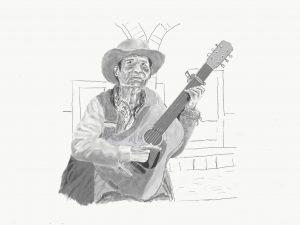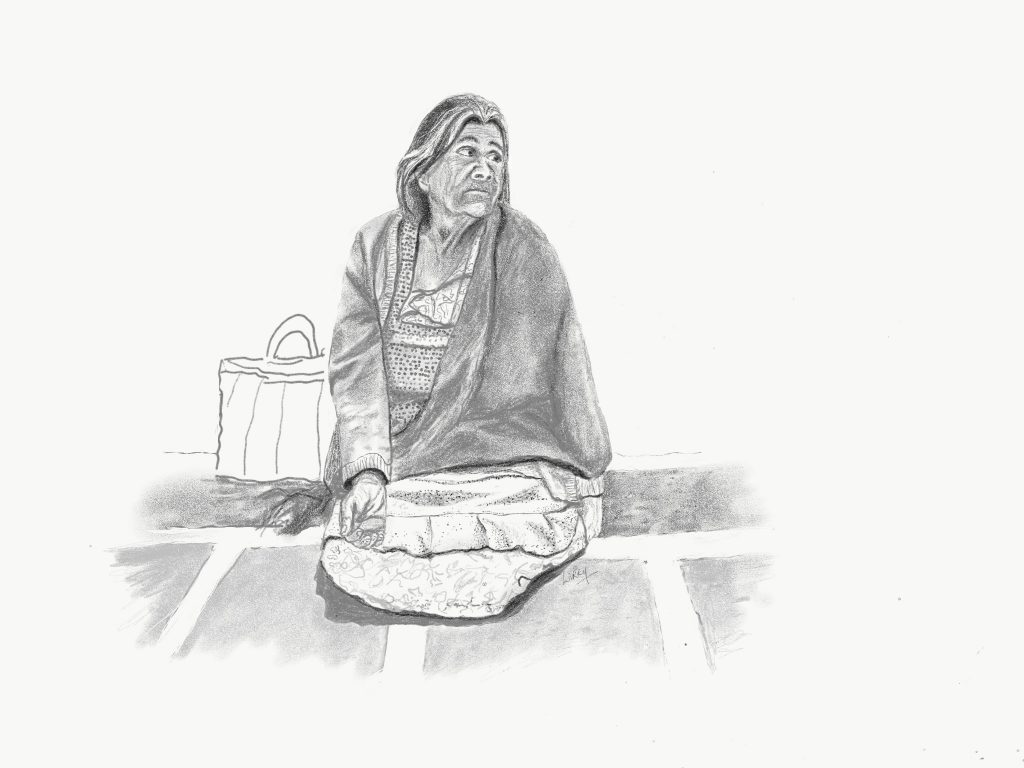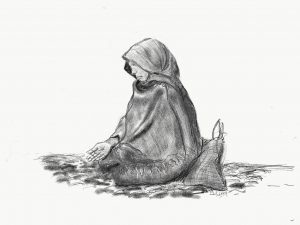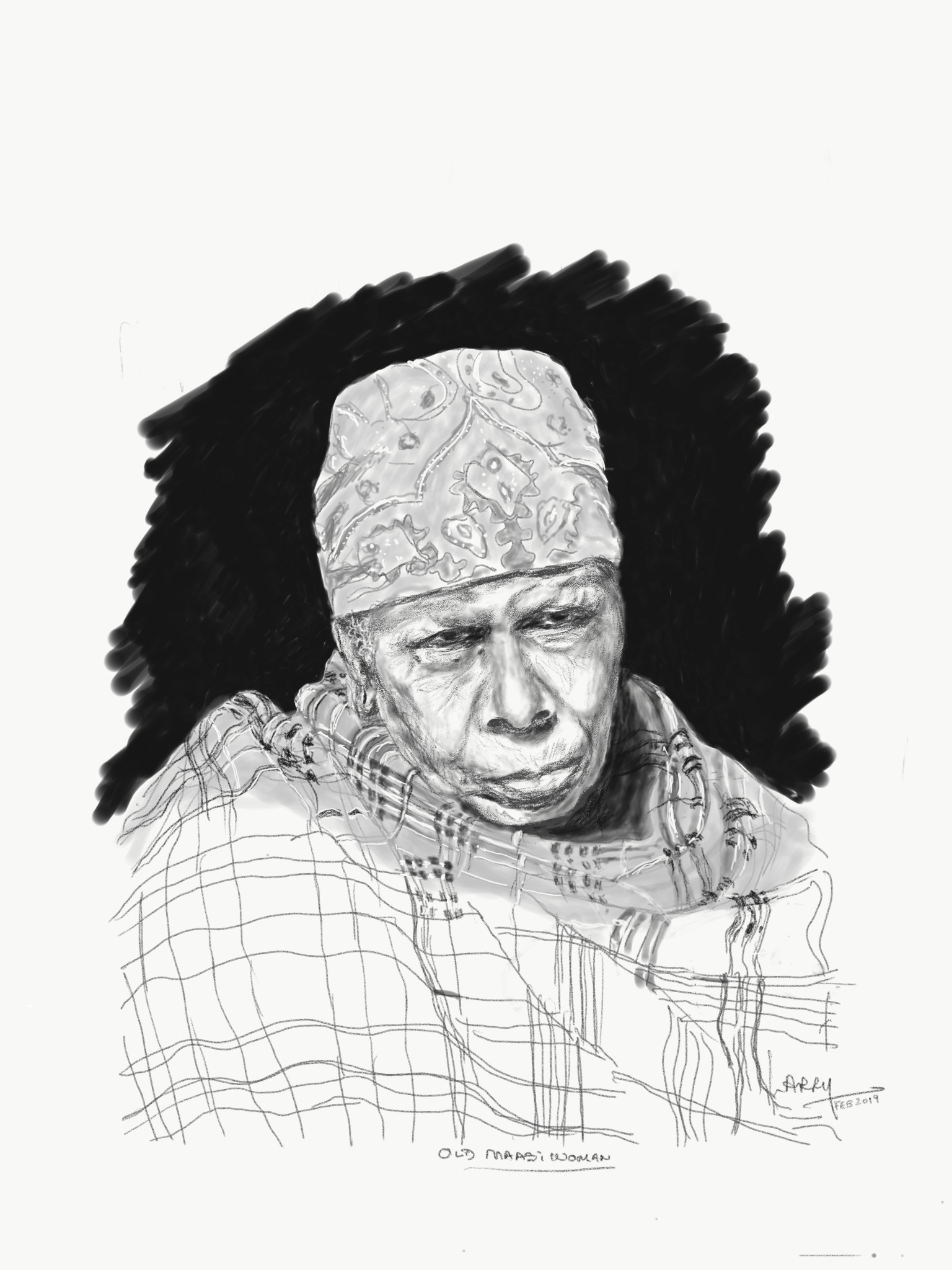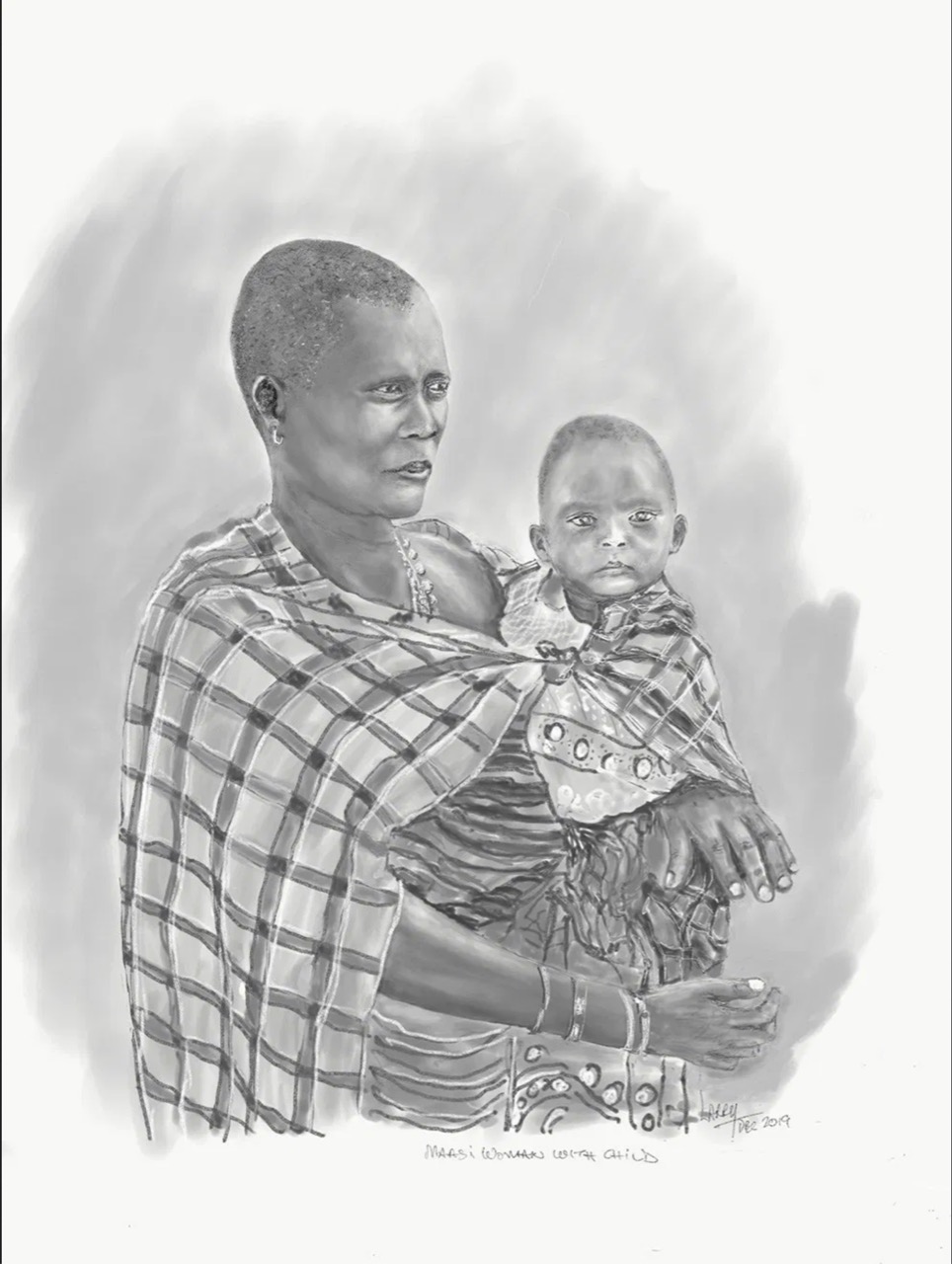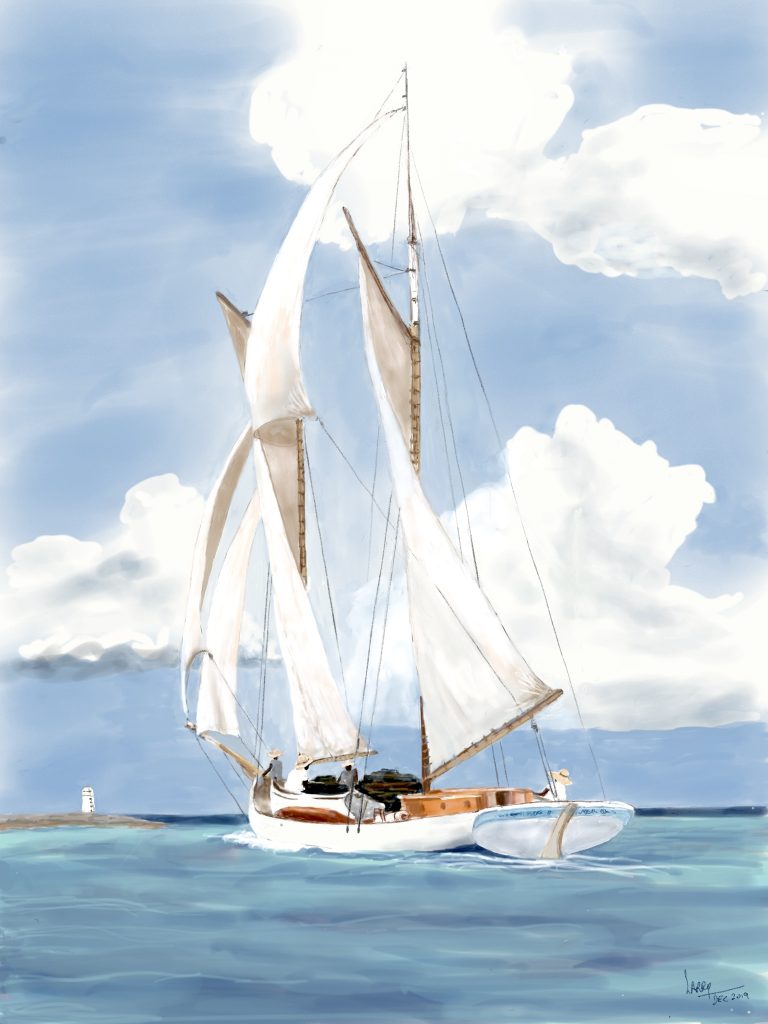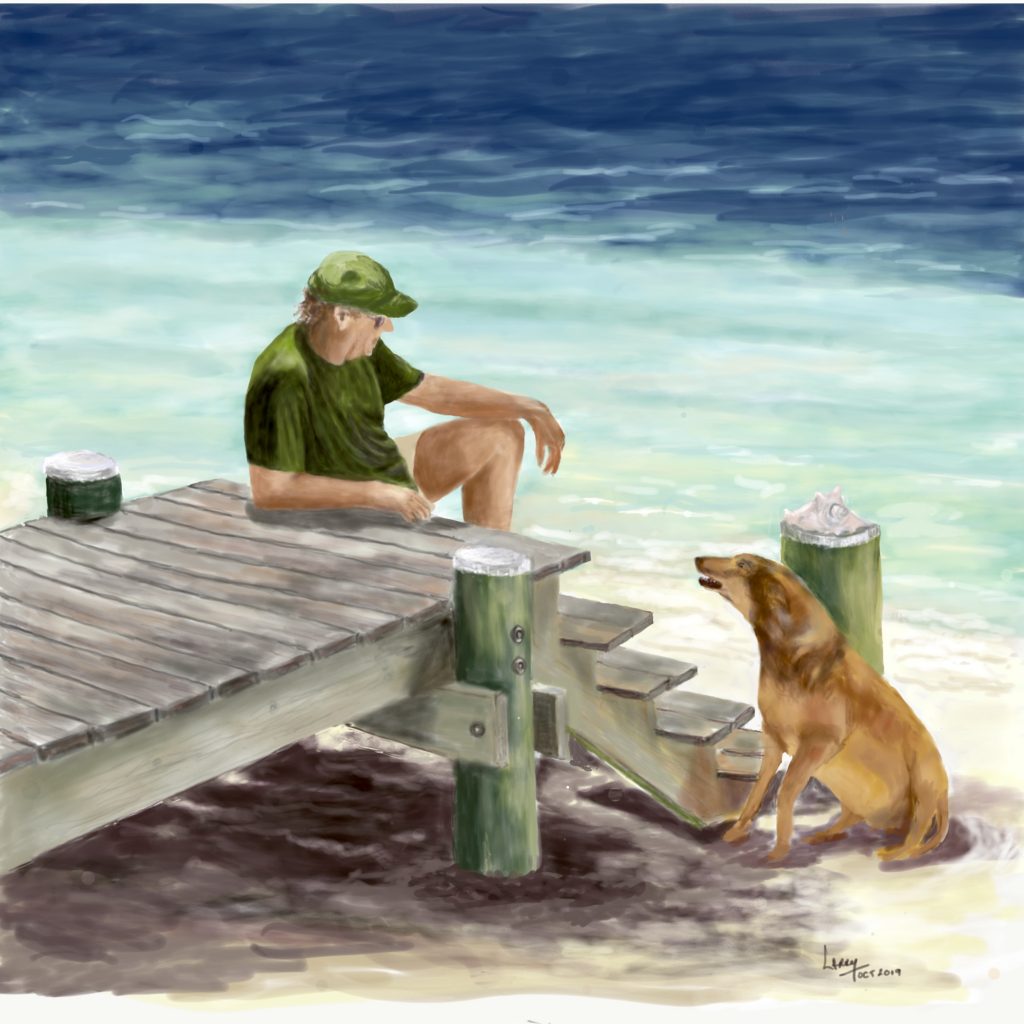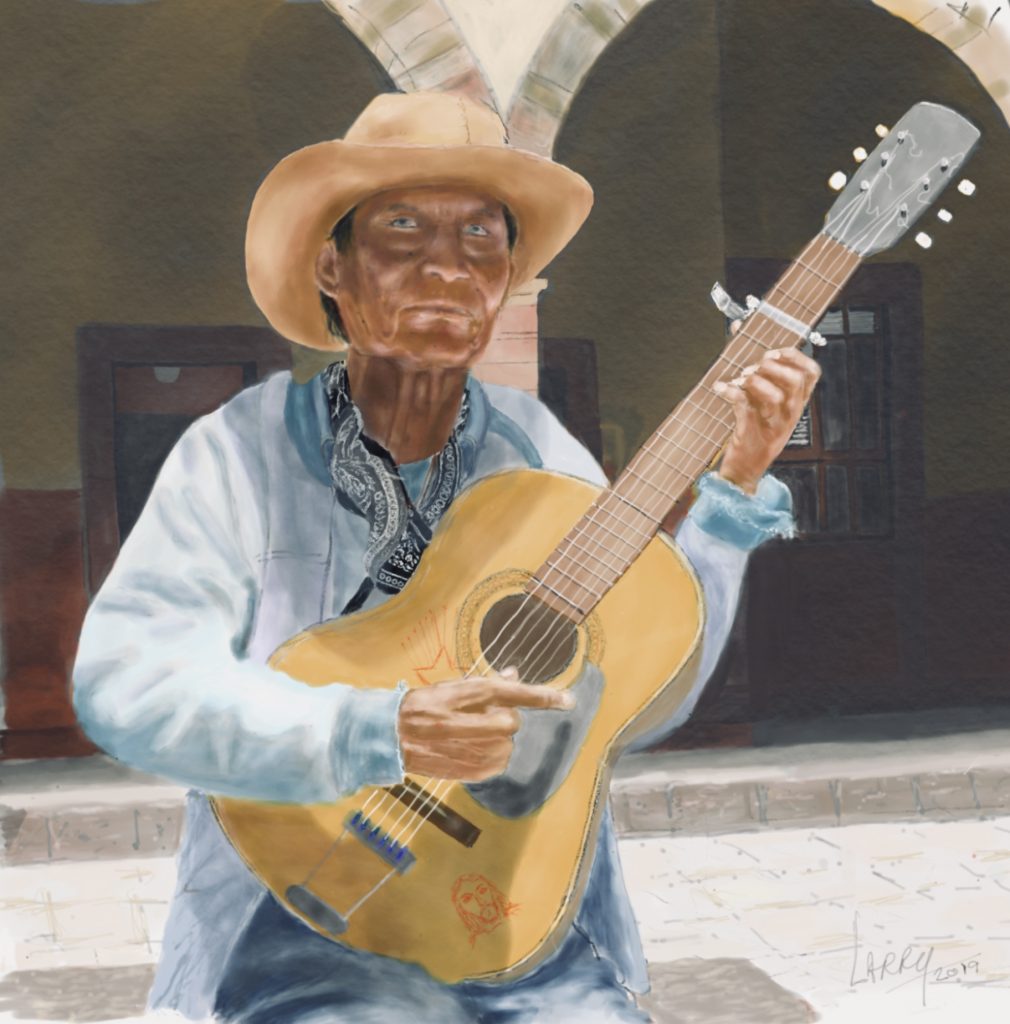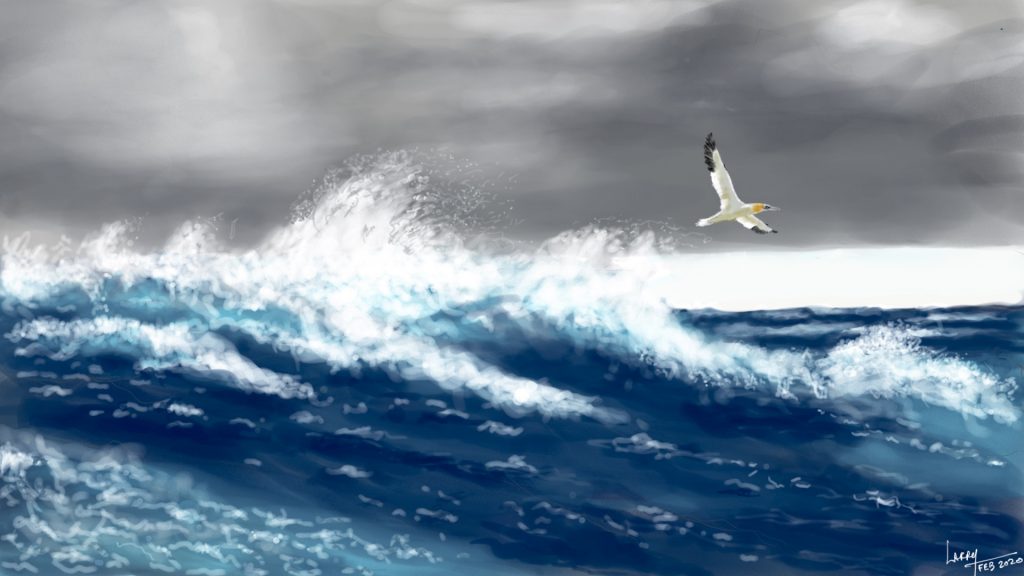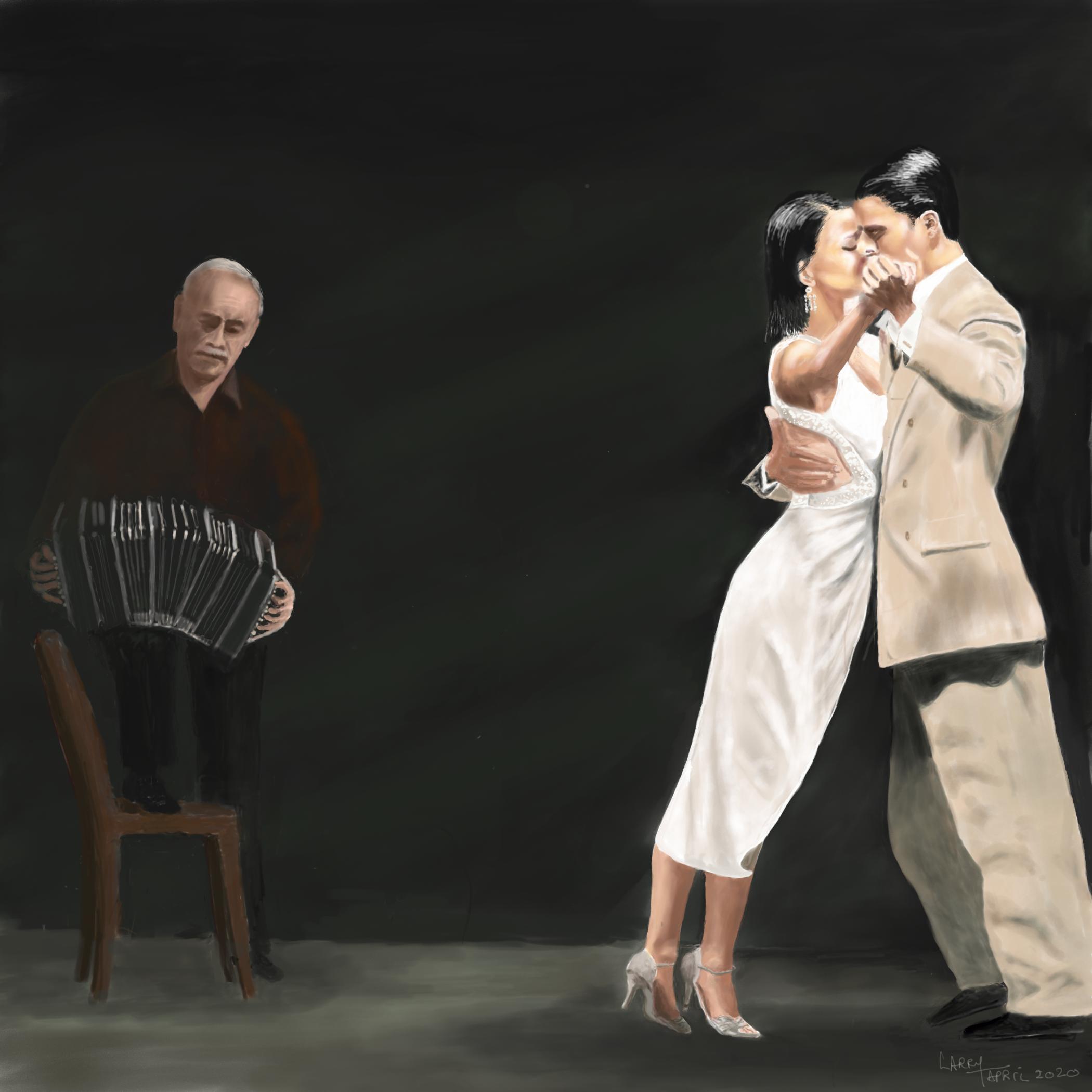The following sketches were my first attempts to sketch and paint digitally using an iPad Pro and a very clever App called Adobe Sketch. Using the Apple Pencil/stylus Adobe Sketch offers the user the option of choosing to simulate a host of mediums including: pencil, charcoal, pastel, watercolour, oil and acrylic combined in with an unlimited selection of colours. Of course as with any new technology it comes with a steep learning curve. The beauty of sketching/painting digitally is if you make a mistake you can easily go back and undo what you have done. Needless to say in the beginning I seemed to spend most of my time using the undo button.
In these first sketches you can see the evolution and the refinement in my technique as the sketches progress between the first sketches of the two Indian women begging on the streets in San Miguel de Allende, Mexico and then the sketch of the Maasai woman in Tanzania. I also did a watercolour painting of this woman featured in the section on the Serengeti, Tanzania. Within the mix is a sketch of a Mexican guitarist in San Miguel de Allende who is also featured in another section of the website in colour.
Painting Evolution
This is my interpretation of a black & white photo taken of a schooner many years ago by the renowned local photographer, Roland Rose.
I have posted a series of images showing how this painting evolved. I do not know where the photo was taken. The design of the hull of the boat is not typical for The Bahamas so it was either a visiting schooner or the photo was not taken in The Bahamas. You will notice that in the second to last frame that the two sailors are both black skinned. In the photo that I copied from I can barely make out a single figure at the stern. I have no idea what ethnicity he is. In this frame I decided to add a second figure…. both black skinned. I then had second thoughts, because of the boats design, and changed the skin colour of both sailors to caucasian.
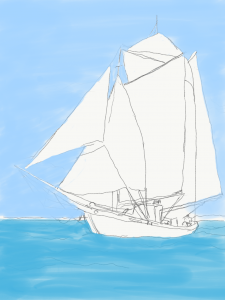
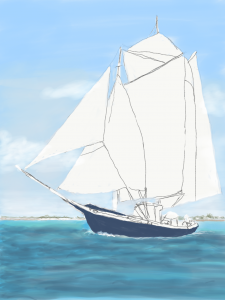
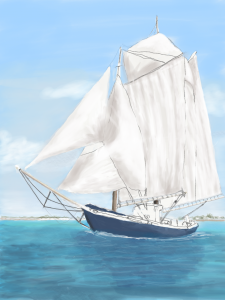
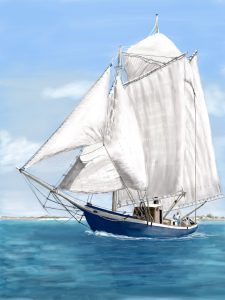
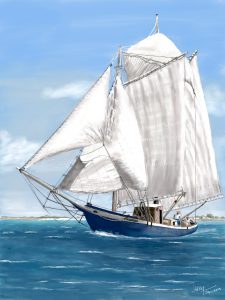
Angry Sea
Recently while flipping though a magazine on an airplane I saw a dramatic photograph which was taken of waves on Lake Superior. I liked the composition of the photograph and decided to try and capture that moment in a painting, but of an ocean scene. I also added an image of a Northern Gannet which is a bird one is likely to encounter far out to sea in The Northern Atlantic Ocean.
Hands
After publishing one of my paintings recently of The Tango Dancers I received a comment from my mentor, Thierry Lamare, www.thierrylamare.com, the renowned French/Bahamian watercolorist who has provided me with an immeasurable amount of pointers and encouragement. Thierry pointed out to me that one of the hands of the violinist in my painting was backwards. I had a good laugh. As any artist can tell you hands are extremely difficult to do and get right. I had been concentrating so hard, looking at and trying to copy one of my own hands, that I failed to realize that I was copying the wrong hand. I was relieved and encouraged when Thierry told me that he has featured aspects of his own hands in all of his paintings that have hands. Needless to say this mistake will not be repeated.
In completing the first draft of my painting of the Tango Dancers, with the violinist, I tried to copy the hand positions from the photograph that I was using as a reference, but for some reason the hands didn’t look natural. I then decided to do a little research and discovered that the hand positions in my painting were not correct. I watched a few YouTube videos on how to hold a violin and now feel as though I have completed course 101 on how to play a violin. I have published here the evolution of the hands in this painting. This series gives you a good idea of how paintings evolve. The first with the left hand reversed. The second with the hands that were better positioned, but not natural, and not backwards, and then the third and those that follow with what I think are the correct hand positions and various refinements in the painting. One of the many advantages to painting digitally is there is no limit to the number of times you can go back and make improvements to a painting.
Also, after publishing the painting of The Tango Dancers I received a comment from a good friend in Argentina. He pointed out to me that the traditional instrument that accompanies the tango is the bandoneon, even though the instrument in the photo that I used as a reference was a violin. Not knowing what a bandoneon is I looked it up and discovered that it is a type of concertina, similar to an accordion, but without the typical accordion keyboard. Also, unlike the accordion which is typically hung from a strap around the musicians shoulder, the bandoneon appears to be rested typically on one of the musicians knees. In order to be true to the dance I did another painting, also featured here, in which I substituted a musician playing the bandoneon.





